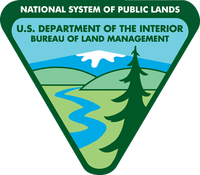
About FlashAlert on Twitter:
FlashAlert utilizes the free service Twitter to distribute emergency text messages. While you are welcome to register your cell phone text message address directly into the FlashAlert system, we recommend that you simply "follow" the FlashAlert account for Bureau of Land Management Ore. & Wash. by clicking on the link below and logging in to (or creating) your free Twitter account. Twitter sends messages out exceptionally fast thanks to arrangements they have made with the cell phone companies.
BOISE, Idaho – Today, the Bureau of Land Management released the final programmatic environmental impact statement for fuels reduction and rangeland restoration in the Great Basin. This programmatic environmental impact statement is intended to further efforts to conserve and restore sagebrush communities within a 223 million-acre area that includes portions of Idaho, Oregon, Washington, California, Nevada and Utah.
“The Department has led the way in advancing critical treatments, including creating fuel breaks, which stop or slow fires,” said Casey Hammond, Principal Deputy Assistant Secretary of Lands and Minerals. “This effort focused on reducing fuels and restoring natural vegetation will reduce the intensity of wildfires, which in turn will reduce the threats from large and severe wildfires to sagebrush-steppe ecosystem and rangeland resources. As we get projects done, these two approaches will work together.”
The Trump Administration has prioritized active management of the nation’s public lands as provided in Executive Order 13855 and Secretary's Order 3372, which establish a meaningful and coordinated framework for ensuring the protection of people, communities, and natural resources. Implementation of both orders is a priority for reducing the risks of deadly and destructive wildfires.
Sagebrush communities in the Great Basin are a vital part of Western working landscapes and are home to over 350 species of plants and wildlife. Intact sagebrush communities are disappearing within the Great Basin due to increased large and severe wildfires, the spread of invasive annual grasses, and the encroachment of pinyon-juniper. The Great Basin region is losing sagebrush communities faster than they can reestablish naturally. Approximately 45 percent of the historical range of sagebrush has been lost. Fuels reduction and rangeland restoration treatments can reduce fire severity, increase sagebrush communities’ resistance to invasive annual grasses and improve their ability to recover after wildfires.
This effort complements a decision to construct up to 11,000 miles of fuel breaks in the Great Basin that was issued last spring. That decision is already being used to expedite construction of approximately 190 miles of fuel breaks in Idaho, Oregon, California, and Nevada.
“Restoring sagebrush communities improves the sustainability of working rangelands and can reduce the expansion of invasive annual grasses,” said Deputy Director for Policy and Programs William Perry Pendley. “People in the Great Basin depend on these landscapes for their livelihoods and recreation and wildlife rely on them for habitat.”
Under the leadership of President Trump and Secretary Bernhardt, the BLM significantly reduced hazardous fuel loads in fire-prone areas by treating more than 782,000 acres in fiscal year 2020 using a variety of active management vegetation treatments including mechanical, biological, and chemical tools as well as prescribed fire.
The preferred alternative outlined in the final fuels reduction and rangeland restoration programmatic environmental impact statement analyzes a full suite of manual, chemical and mechanical treatments, including prescribed fire, seeding, and targeted grazing to reduce fuels and conserve and restore sagebrush communities. When completed, the programmatic environmental impact statement will not authorize any specific fuels reduction or rangeland restoration projects. Instead, it will analyze common elements of fuels reduction and rangeland restoration projects. Local offices can use this information to comply with National Environmental Policy Act requirements when planning and analyzing specific projects, potentially allowing for more rapid implementation.
An electronic copy of the Final PEIS and associated documents is available for public review for 30 days on the BLM Land Use Planning and NEPA register: https://go.usa.gov/x79bp . The BLM will issue a record of decision after the end of the public review period.
-BLM-
The BLM manages more than 245 million acres of public land located primarily in the 11 Western states and Alaska. The BLM also administers 700 million acres of sub-surface mineral estate throughout the nation. In fiscal year 2018, the diverse activities authorized on BLM-managed lands generated $105 billion in economic output across the country. This economic activity supported 471,000 jobs and contributed substantial revenue to the U.S. Treasury and state governments, mostly through royalties on minerals.